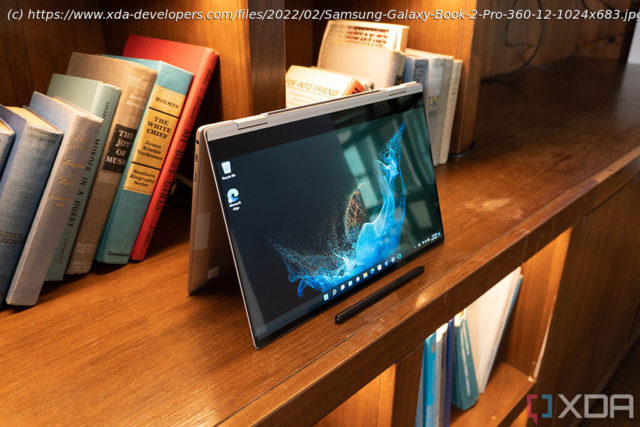Samsung’s Galaxy Book 2 Pro series has AMOLED displays, super-light designs, big touchpads, and more, and we got to go hands on with them.
Samsung has officially announced the Galaxy Book 2 series, not to be confused with the Snapdragon 850-powered Galaxy Book 2 from a few years ago. Consisting of the Galaxy Book 2 Pro, Galaxy Book 2 Pro 360, Galaxy Book 2 360, and Galaxy Book 2 Business, Samsung kept the best of last year’s models (mostly), and elevated them with Intel 12th-gen processors and FHD webcams. Last year, the Galaxy Book Pro 360 5G was one of my favorite laptops, and I even said in the title of my review that it’s the perfect on-the-go laptop. Anyone that knows me knows that I do not use words like ‘perfect’ lightly. Sadly, this year’s 5G model isn’t coming to the U.S., but the Galaxy Book 2 series is still pretty sweet, and I got to check them out ahead of the announcement. The biggest thing I love about the Samsung Galaxy Book 2 series is the FHD AMOLED display, and those are still here. OLED screens on laptops aren’t new, or even uncommon. However, just about every OLED laptop that offers the display technology does it at a premium. The standard is always a regular LCD, and then there’s a 4K OLED option. That makes two things that Samsung really has going for it. For one thing, every single Galaxy Book 2 360, Galaxy Book 2 Pro, and Galaxy Book 2 Pro 360 comes with an AMOLED display. Also, that’s actually new to the non-Pro model, so that’s a big plus. The other reason it’s great is that it’s 1080p instead of 4K, so it doesn’t suck down battery life as much. The other key thing that hasn’t changed is that these laptops seem impossibly light. The 13-inch Galaxy Book 2 Pro weighs in at just 1.92 pounds, whereas if you want a convertible, it’s 2.29 pounds. The 15.6-inch variant comes in at 2.45 pounds and 3.06 pounds for the clamshell and the convertible, respectively. Like I said, it feels impossible for a laptop to be that light without making significant compromises. Those compromises might be on the performance side, or materials could be used that feel cheap.






